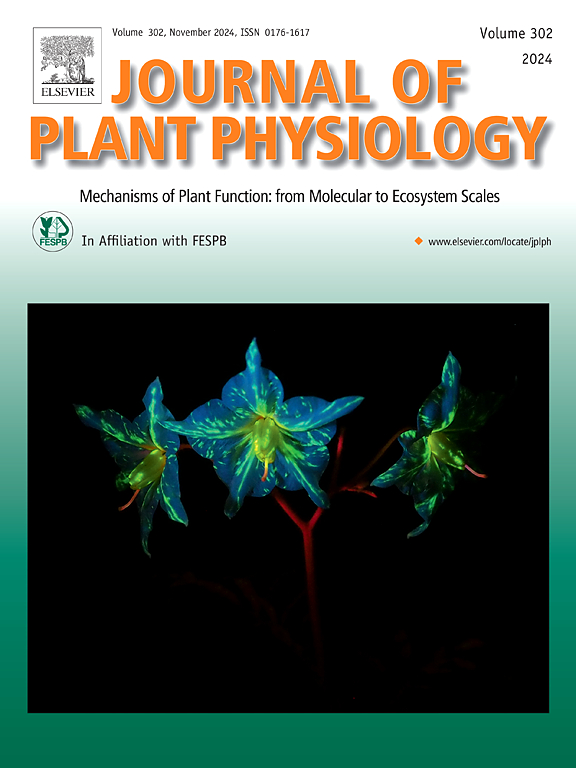糖在植物膜上转运的功能和特性:历史和前景
IF 4.1
3区 生物学
Q1 PLANT SCIENCES
引用次数: 0
摘要
糖是生命中不可缺少的,作为代谢底物、信号分子和结构成分。它们在细胞膜上受控制的运动对细胞功能和发育至关重要。在这篇综述中,我们追溯了植物糖转运体研究的历史和科学轨迹,从kessleri小球藻发现质子偶联葡萄糖摄取开始。这一发现导致HUP1的分子鉴定,HUP1是第一个克隆的植物糖转运蛋白,也是植物单糖转运蛋白(MST)家族的创始成员。然后,我们将这些见解转化为维管植物,重点是拟南芥,其中发现了一个大型且功能多样的MST超家族,包括七个在定位,运输底物和运输能量等特征上不同的亚家族。我们还提供了对最新描述的具有跨界保护的糖转运蛋白SWEET家族的进化,结构和多功能的见解。通过整合早期发现和最新进展,本文综述了糖转运体在植物生理和环境适应中的重要作用。最后,我们强调了目前的知识差距,并提出了未来的研究方向,以加深我们对植物糖转运机制的理解。本文章由计算机程序翻译,如有差异,请以英文原文为准。
Humboldt review: Function and characterization of sugar transport across plant membranes: History and perspectives
Sugars are indispensable to life, acting as metabolic substrates, signalling molecules, and structural components. Their controlled movement across membranes is essential for cellular function and development. In this Humboldt Review, we trace the historical and scientific trajectory of plant sugar transporter research, beginning with the discovery of proton-coupled glucose uptake in Chlorella kessleri. This finding led to the molecular identification of HUP1, the first cloned plant sugar transporter and a founding member of the plant Monosaccharide Transporter (MST) family. We then follow the translation of these insights to vascular plants, focusing on Arabidopsis thaliana, where a large and functionally diverse MST superfamily, including seven subfamilies that differ in characteristics such as localization, transport substrate, and transport energization, was uncovered. We also provide insights into the evolution, structure, and multifunctionality of the newest described SWEET family of sugar transport proteins with cross-kingdom conservation. By integrating early discoveries with recent advances, this review offers a comprehensive perspective on the critical roles of sugar transporters in plant physiology and environmental adaptation. We conclude by highlighting current knowledge gaps and proposing directions for future research to deepen our understanding of plant sugar transport mechanisms.
求助全文
通过发布文献求助,成功后即可免费获取论文全文。
去求助
来源期刊

Journal of plant physiology
生物-植物科学
CiteScore
7.20
自引率
4.70%
发文量
196
审稿时长
32 days
期刊介绍:
The Journal of Plant Physiology is a broad-spectrum journal that welcomes high-quality submissions in all major areas of plant physiology, including plant biochemistry, functional biotechnology, computational and synthetic plant biology, growth and development, photosynthesis and respiration, transport and translocation, plant-microbe interactions, biotic and abiotic stress. Studies are welcome at all levels of integration ranging from molecules and cells to organisms and their environments and are expected to use state-of-the-art methodologies. Pure gene expression studies are not within the focus of our journal. To be considered for publication, papers must significantly contribute to the mechanistic understanding of physiological processes, and not be merely descriptive, or confirmatory of previous results. We encourage the submission of papers that explore the physiology of non-model as well as accepted model species and those that bridge basic and applied research. For instance, studies on agricultural plants that show new physiological mechanisms to improve agricultural efficiency are welcome. Studies performed under uncontrolled situations (e.g. field conditions) not providing mechanistic insight will not be considered for publication.
The Journal of Plant Physiology publishes several types of articles: Original Research Articles, Reviews, Perspectives Articles, and Short Communications. Reviews and Perspectives will be solicited by the Editors; unsolicited reviews are also welcome but only from authors with a strong track record in the field of the review. Original research papers comprise the majority of published contributions.
 求助内容:
求助内容: 应助结果提醒方式:
应助结果提醒方式:


